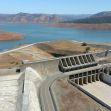Several groups of nonprofit environmental advocacy groups have filed a lawsuit against California. The lawsuit is in opposition to a new dam that is set to be built in the Del Puerto Canyon. The lawsuit was filed by the Sierra Club, the California Native Plant Society, Friends of the River, and The Center for Biological Diversity.
Together, the groups are arguing that the state will inflict harm to the environment, animal wildlife, rare plant species, and that they violated the California Environmental Quality Act (CEQA).
The state’s Del Puerto Canyon Reservoir is expected to span 800 acres of land and store 82,000 acre-feet of water that can be used for downstream agriculture. The dam is also expected to flood different parts of recreational and cultural sites. The environmental advocacy groups express their concern that by going forth with plans to build the dam, valuable wildlife habitats will be destroyed. The lawsuit also advocates that the Delta ecosystem will be further strained because that is where the water will be drawn from.
Sean Wirth of the Sierra Club shared the following in a statement, “The district’s plan to destroy this precious local landscape, and further strain the seriously imperiled Delta ecosystem, is sad and unfortunate. This project would erase an important part of the area’s history and access to nearby nature, while also putting the residents of Patterson at risk should the dam fail.”
Dam Promises to Support Local Agriculture
The dam is expected to bring stored water for local farmers and agriculture. The state's plan to build the dam will allow water to be pumped from the Sacramento-San Joaquin Delta into the Central Valley Project. The state's reasoning for the dam is that it will allow water to be stored for use during the drier periods when it is needed for irrigation, groundwater recharge, and even for nourishing wildlife.
The project will be paid for by agricultural users of the water; however, these users are asking for additional state and federal funding to help with costs. Overall, the state is expecting the dam to help with flooding on the Del Puerto Creek and support the local agriculture and farming community.
Concerns over Environmental Impact
In December 2019, the state released an Environmental Impact Report with an Environmental Review that was set to be completed by the middle of 2020. However, the environmental advocacy groups filing the lawsuit argue that the report did not take into consideration the negative impact the dam will have on local wildlife.
The Center for Biological Diversity argues that the 800 acres planned for the dam are vital to the existence of the California Red-Legged Frogs and the California Tiger Salamanders. The advocacy groups further address that these species are protected under California law.
It’s not just the animals the advocacy groups are arguing on behalf of. The 800-acre land is also home to several rare plant species, including the Diamond-Petaled California Poppy and the Lemmon’s Jewelflower.
Residents Express Their Concerns
Local citizens are also concerned about the construction of the dam. The Action Network is currently running a petition in which Patterson residents are objecting to the new reservoir. Over 1,000 signatures have been collected on behalf of the community of 25,000 residents.
The petition highlights that residents would be on average five miles away from the dam and that flooding will be a major concern. Additionally, homes in the area would now be classified as being in hazardous inundation zones, and this could impact any potential sale of a home. Air quality is also a concern due to the debris that will contaminate the air over the six years of construction.
While many residents have signed the petition, they also acknowledge that they are not anti-dam, but they would like plans to be reconfigured so that the dam is at least ten miles away.
Although the lawsuit has been filed, it is unclear if the project will be halted. As of now, the state plans to design and acquire the land from now through 2022, with construction beginning in 2022. The construction of the dam is anticipated to take six years to complete.






